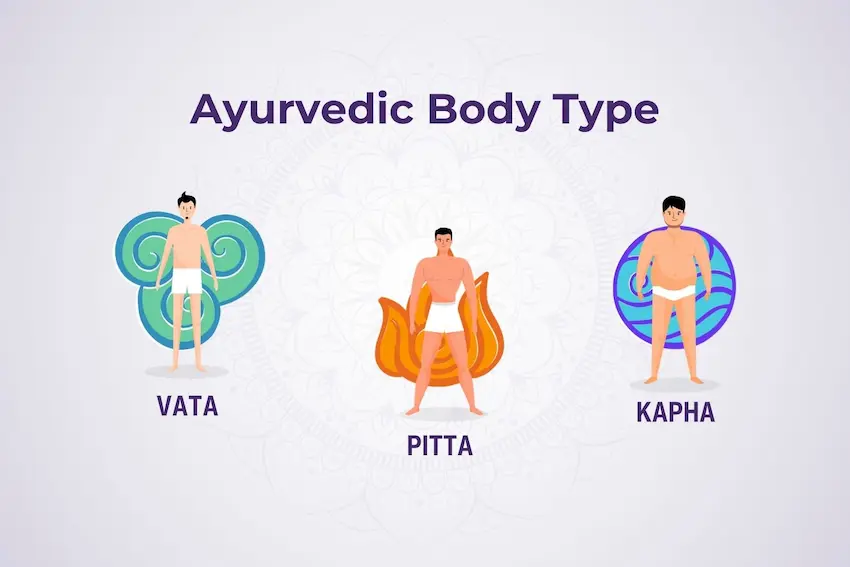Ayurveda, often referred to as the “science of life,” is one of the world’s oldest holistic healing systems. Originating over 5,000 years ago in India, Ayurveda was developed by sages who understood that true health encompasses the mind, body, and spirit. This ancient practice is more than just a system for treating illness—it’s a philosophy for living in harmony with the rhythms of nature.
Rooted in the Sanskrit words “Ayur” (life) and “Veda” (knowledge), Ayurveda is a comprehensive way of understanding human health. It teaches that wellness is achieved by balancing internal energies and living in alignment with one’s unique constitution.
In today’s fast-paced, modern world, Ayurveda offers timeless insights that can guide us toward deeper health and wellbeing—not by replacing modern medicine, but by complementing it with individualized care, prevention, and natural therapies.
The Three Doshas: Your Inner Blueprint
At the heart of Ayurvedic theory is the concept of Doshas—the biological energies that govern every individual’s physical and mental processes. The Doshas are derived from the five elements: ether (space), air, fire, water, and earth.
1. Vata Dosha (Air + Ether)
- Governs movement, communication, and the nervous system
- Characteristics: light, dry, cold, quick, and changeable
- When balanced: creative, energetic, adaptable
- When imbalanced: anxious, forgetful, constipated, easily fatigued
2. Pitta Dosha (Fire + Water)
- Governs digestion, metabolism, and transformation
- Characteristics: hot, sharp, intense, oily
- When balanced: focused, courageous, passionate
- When imbalanced: irritable, inflamed, prone to heartburn or skin issues
3. Kapha Dosha (Earth + Water)
- Governs structure, stability, and lubrication
- Characteristics: heavy, slow, calm, moist
- When balanced: grounded, loyal, patient
- When imbalanced: sluggish, stubborn, congested, prone to weight gain
Each person has a unique combination of these Doshas, known as their Prakriti (constitution). Understanding your dominant Dosha(s) can help you tailor your diet, lifestyle, and treatments to support balance and vitality.

Health and Illness: A Holistic Perspective
Unlike conventional medicine, which often focuses on symptom management, Ayurveda seeks to identify and treat the root cause of illness. Health, in Ayurveda, is not merely the absence of disease – it is a dynamic state of balance between body, mind, spirit, and environment.
Ayurveda views health as:
- A balanced state of the Doshas
- Proper digestion (Agni or digestive fire)
- Efficient elimination of waste (Malas)
- Harmonious functioning of bodily tissues (Dhatus)
- A peaceful and content mind
When any of these aspects are disturbed—by poor diet, stress, seasonal changes, or lifestyle habits—imbalances arise, eventually manifesting as physical or mental ailments.
Core Ayurvedic Practices and Therapies
Ayurveda’s healing toolkit is vast, natural, and personalized. Treatments aim to restore balance using the least invasive means possible, beginning with lifestyle and dietary adjustments and advancing to therapies if needed.
1. Diet and Nutrition
Food is considered medicine in Ayurveda. Diets are customized based on Dosha type, digestive strength, and the seasons.
- Vata types benefit from warm, moist, grounding foods like stews and root vegetables.
- Pitta types thrive on cooling, mildly spiced foods like cucumbers, leafy greens, and grains.
- Kapha types do best with light, spicy, and dry foods like lentils, bitter greens, and barley.
2. Herbal Medicine
Ayurvedic herbs help balance Doshas and treat specific health conditions. Common examples include:
- Ashwagandha (adaptogen for stress and vitality)
- Triphala (digestive and detoxifying support)
- Turmeric (anti-inflammatory and immune booster)
3. Daily Routines (Dinacharya)
Ayurveda emphasizes the power of consistent daily rituals to maintain health:
- Wake early and practice oil pulling and tongue scraping
- Drink warm water with lemon or herbs
- Follow a Dosha-appropriate breakfast
- Practice mindful movement like yoga or walking
- Eat your largest meal at midday (strongest digestive fire)
- Wind down with calming rituals before bed
4. Massage and Body Therapies
Known as Abhyanga, daily self-massage with warm oil calms the nervous system, improves circulation, and nourishes the skin.
- Vata: sesame or almond oil
- Pitta: coconut or sunflower oil
- Kapha: mustard or safflower oil
Detoxification (Panchakarma)
A deep cleansing process designed to remove toxins (Ama) and rejuvenate the body. Conducted under the guidance of Ayurvedic practitioners, it includes:
- Herbal enemas
- Therapeutic vomiting
- Nasal cleansing
- Oil massages and steam therapy
- Specialized diets
Benefits and Limitations of Ayurveda in Modern Healthcare
Benefits
- Personalized approach: Ayurveda tailors treatments to the individual, not just the disease.
- Focus on prevention: Regular routines and diet reduce the risk of chronic illness.
- Natural remedies: Minimizes reliance on synthetic drugs.
- Mind-body integration: Emphasizes emotional wellbeing as crucial to physical health.
Limitations
- Scientific validation: While many Ayurvedic practices are backed by centuries of use, more high-quality clinical trials are needed to meet modern standards of evidence.
- Complexity for beginners: Understanding your Dosha and following Ayurvedic routines can be overwhelming without guidance.
- Quality control of herbs: Inconsistent manufacturing practices can affect safety and efficacy. Always source herbs from trusted brands.
Ayurveda should be seen as a complement to, not a substitute for, conventional medical care—especially for acute or life-threatening conditions.
Integrating Ayurveda into a Modern Lifestyle
Adopting Ayurvedic principles doesn’t mean changing your entire life overnight. Start small, stay consistent, and observe what works for your body and mind.
Practical Tips for Beginners:
- Know your Dosha: Take a Dosha quiz or consult an Ayurvedic practitioner to understand your constitution.
- Start your day with mindfulness: Begin with warm water, gentle stretching, and quiet reflection or meditation.
- Eat with awareness: Choose fresh, seasonal foods that align with your Dosha and eat without distractions.
- Follow the sun: Align meals and sleep with natural circadian rhythms—wake early, eat your largest meal at noon, and sleep by 10 PM.
- Embrace herbal teas: Sip ginger, tulsi, or fennel teas to support digestion and detoxification.
- Simplify self-care: Try 5–10 minutes of self-massage, dry brushing, or aromatherapy to calm the senses.
Final Thoughts: A Journey Back to Balance
In a world dominated by quick fixes and constant stimulation, Ayurveda reminds us to slow down, listen to our bodies, and live in harmony with nature. It doesn’t promise instant results, but it offers a steady, thoughtful path to holistic health and longevity.
By integrating Ayurvedic wisdom into our daily routines—even in small ways—we can reconnect with our innate healing potential and build a lifestyle that supports vibrant health, clarity of mind, and emotional resilience.
Whether you’re seeking better digestion, more energy, or deeper peace, Ayurveda has something timeless to offer. Let it be your guide toward balance, wellness, and a more conscious way of living.
Resources to Explore Further:
- The Complete Book of Ayurvedic Home Remedies by Vasant Lad
- Prakriti: Your Ayurvedic Constitution by Robert Svoboda
- The Ayurvedic Institute
- Online Dosha quizzes (e.g., Banyan Botanicals, Chopra)
